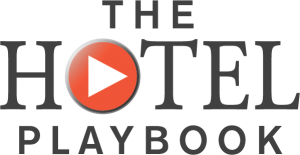Originally published by: Stacia Skinner, Mar 4, 2015, on: cts-solutions.info
How often do you truly examine your own sales abilities? Maybe not often enough. So, take out your pens…it’s time for a simple quiz:

No matter how many YES or NO answers you had, it never hurts to review the facts..
1. Knowing your Average Sales Cycle. This is critical. Yes, there will be sales that take longer than average, but knowing what is average for you helps to see when you are losing momentum. The longer a sale takes outside of your “average” sales cycle, the less likely it is to happen.
Action step: Identify three prospects you have been working on longer than “average.” Get creative and figure out ways to engage them back into a conversation. (i.e. Have them talk to a happy customer or meet an executive from your company. Have your manager do a thank you or apology call.)
2. Mastering Voicemail. The number one reason your voicemail does not get returned is because your voicemail sounds like a SALES CALL. Whether you are calling prospects or customers, create intrigue, curiosity, and keep it short, sweet, and to the point!
Action step: Want to really increase your return calls from voicemail? Call us at 847-577-4115 and leave a sample voicemail message. We would love to give you feedback and help you increase your results!
3. Hearing the “No.” Change your mindset about this. We are in the business of hearing “No.” If you are not hearing enough “No” responses each day, whether you are in the sales process or prospecting, you’re not going to get to the “Yes” you are looking for. Knowing how many “No” responses it takes to get to “Yes” will help you gain success.
Action Step: Track your ratios for two weeks. On average, how many calls does it take to get one appointment? On average, how many sales calls does it take to close a sale? This will help you determine your activity targets and typically how many “No’” responses it takes to get a “Yes!”
4. Being Calendar Conscious. Exactly how many people’s work calendars does your name appear on? This should be a mutually agreed upon date and time on both of your calendars. This question can be a reality check.
Sales professionals are addicted to a terrible drug called HOPIUM. We “hope” they are in the market for our products or services. We “hope” they like the quote we emailed. Prospects can say they’re interested, but when they put YOUR name in their calendars in the next two weeks, you know you have engaged potential buyers. Interest is demonstrated by action. Always ask for a “Next Step.” No date…no time…no dollars.
Action Step: Take an honest look at your pipeline. If you simply have a plan to “follow up,” take it a step further and ask the prospect for a specific date and time to talk so you can avoid HOPIUM!
5. Reaching the Decision Maker: Our goal is to get to the decision maker and not get stopped by a gatekeeper or executive assistant. The more direct and confident you are, the more likely you will get through. Acknowledge the gatekeeper/executive assistant but don’t get caught up in long dialog with him or her. Be specific with what you want, which is to have a conversation with the decision maker! You stay in control of the conversation.
Action step: Pre-call plan before you get on the phone. Think of what your response will be when you connect with that gatekeeper or executive assistant. Be prepared with a reference name or company name and ask for the decision maker with confidence. “I would like to talk to the CEO of your company. Could you put me through please?”
Good selling out there and feel free to contact Creative Training Solutions if we can help you in any way!
ETIQUETTE CORNER:
Name Tag Etiquette
 If you’re at a work event or tradeshow and find yourself pinning on, sticking on, or hanging a name tag over your head, here’s how to do it right:
If you’re at a work event or tradeshow and find yourself pinning on, sticking on, or hanging a name tag over your head, here’s how to do it right:
- A stick-on or pin-on name tag should be worn about four inches below your shoulder, on your right side. This way it will be visible to people when shaking hands during an introduction.
- When viewing someone’s name tag, glance at it. Don’t stare at if for a long period of time.
- “Mr.” or “Mrs.” or “Ms.” should not be written on a tag but it is permissible to include “Dr.”
- At business events (not at the evening party) it is a good idea to add your title under your name. And if the event includes people from many companies, add your company name, too.
- If you are writing out your own tag, print it and write your name legibly.
Enjoy the opportunity to expand your network!




